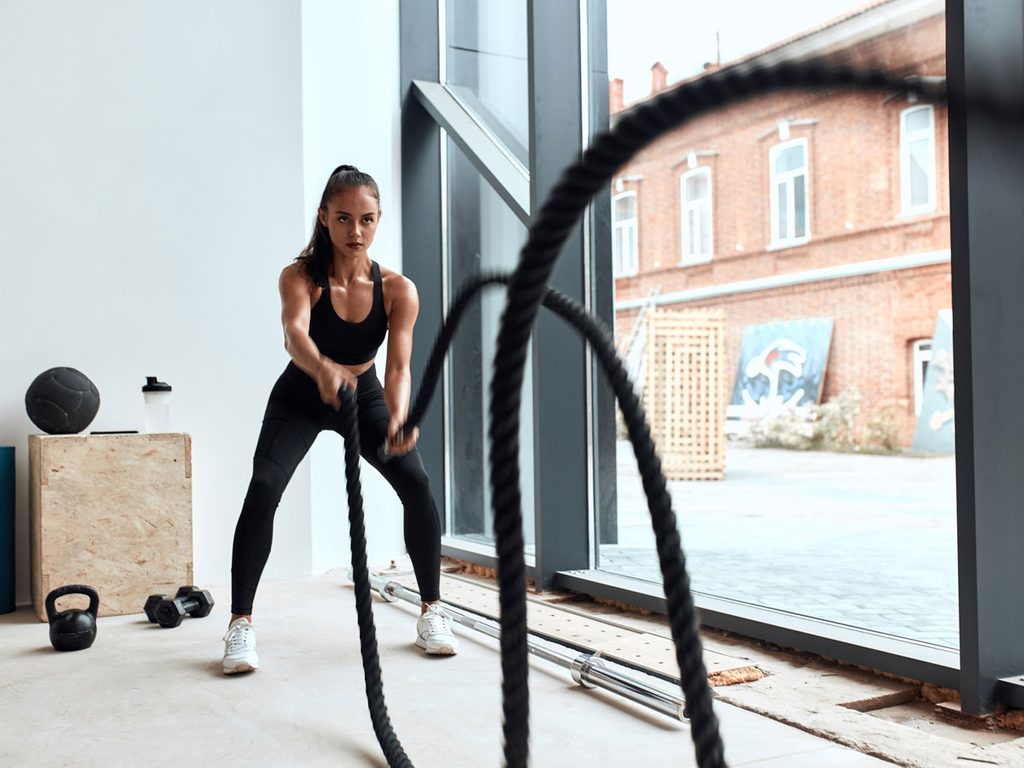This One Workout Can Help Trim Your Waistline

Forget crunches and hours spent on treadmills.
The key to trimming your waistline may start at the gym, but your cardio session isn’t the only form of exercise that can help. As a matter of fact, science suggests that interval training may be more effective at helping you lose weight than steady-state cardio. (No gym membership? Here’s what you need to know before signing up.)
A 2019 review and meta-analysis published in the British Journal of Sports Medicine analyzed more than 75 studies involving more than 2,000 people. Each study compared interval training—working at quick bouts of high-intensity effort, followed by short rest periods—to continuous effort exercise at a moderate intensity for at least four weeks. The researchers found that those who turned to interval training reduced their overall fat mass by 28.5 percent more than those who did continuous, lower-intensity exercise.
Many different types of interval training were included in the meta-analysis, but Albert Matheny, RD, nutritional advisor to Promix
Matheny says to keep in mind that there is no definitive work-to-rest ration for high-intensity interval training (or HIIT), so see what works for you. “The main parameters are intense exercise, which could be 10 seconds or a few minutes, with alternating intervals of rest or very low-intensity exercise,” he says. “In general, I would recommend working above 80 percent of your max heart rate for the interval, and no longer than 20 minutes maximum of a training session. The goal during rest is to get your heart rate down around 60 percent of your max.” (Learn how to improve your workout by zeroing in on your ideal heart rate.)
An important caveat for anyone who wants to try HIIT for the first time: It’s not for everyone and requires a familiarity with any exercise you’re doing. “Due to its high-intensity nature, you should have some familiarity with exercise in general, and specific experience in the movements you will be doing for your HIIT workout,” Matheny says. “Also, as with anything, like driving a car, when you first learn to do something you should not be doing it as fast as possible, which is often required as part of a HIIT workout. The faster you go, the more your heart rate will go up. The reason is when you learn a movement you need to practice performing it correctly at a slow speed before trying to do it as fast as you can in a HIIT setting.” If you’ve never run stairs or done squat jumps, don’t use that as your first HIIT exercise. Stick to what you know. (Speaking of stairs, here’s how to use your steps to get an effective, full-body workout.)
As a bonus, intervals allow you to focus on different muscle groups as you switch between exercises, which gives certain muscles time to recover while you fire up others.
Now that you know the best workout to help trim your waistline, next learn the benefits of working out your core.




